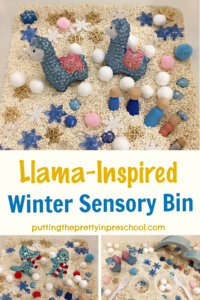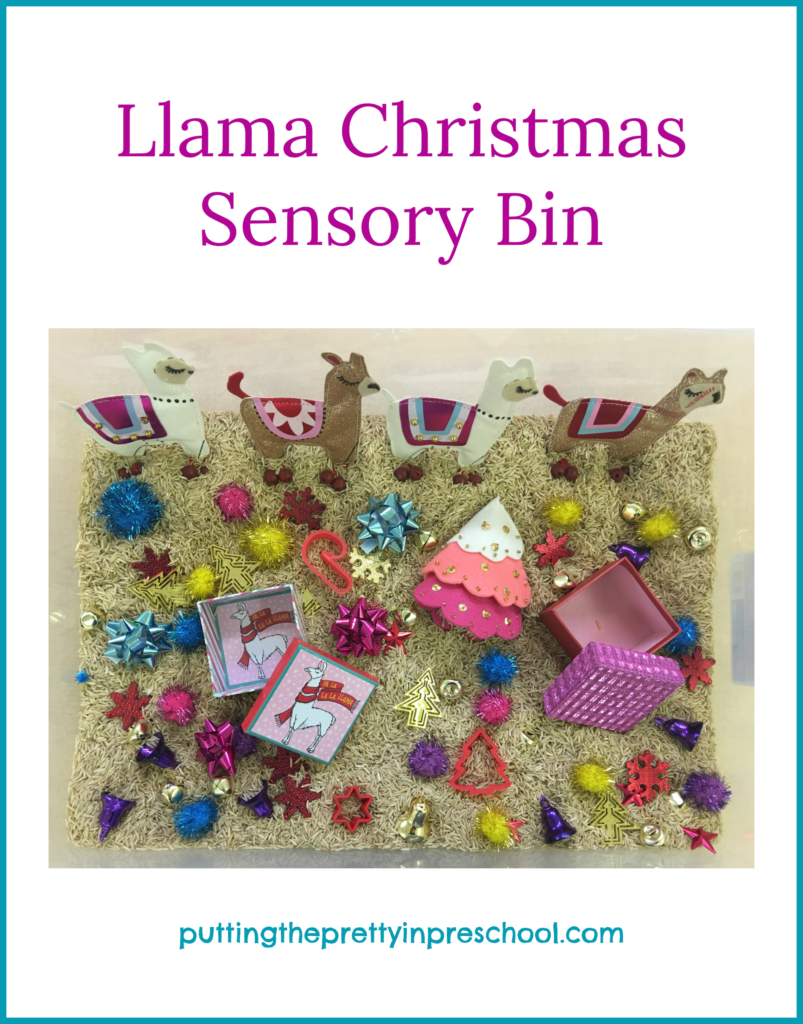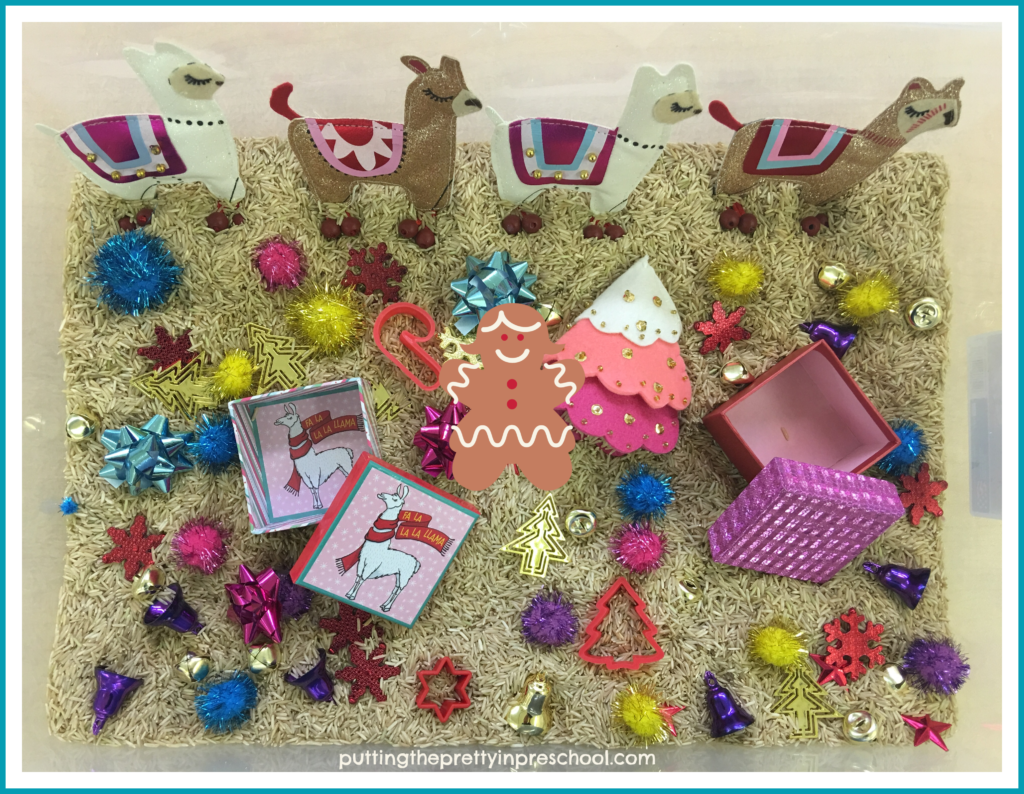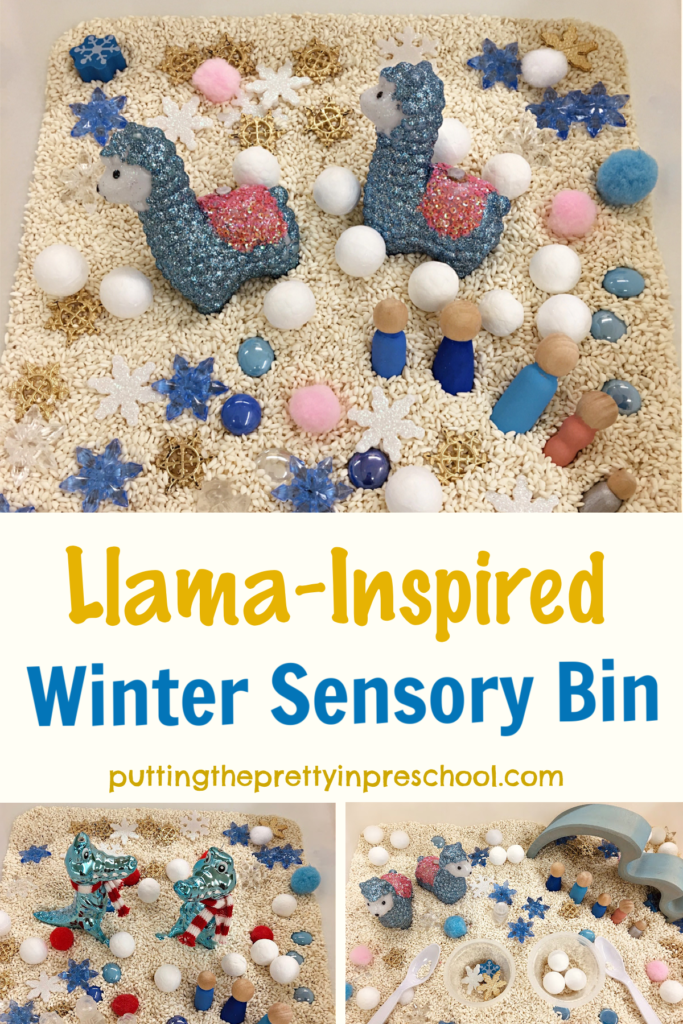
_______
It’s very common to spot llamas in art looking beautiful in color-coordinated desert scenes, so I’ve always imagined them to be desert-dwelling creatures. But a little research shows that llamas are native to mountainous areas and high plateaus in South America. In fact, due to their thick, warm coats, they are even comfortable in snowy winter weather. So that is why two bluish llama ornaments spotted on sale just after Christmas are the stars of this llama-inspired winter sensory bin.
_______
Follow me on Pinterest for more early learning ideas.
_______
Sensory Bin Supplies
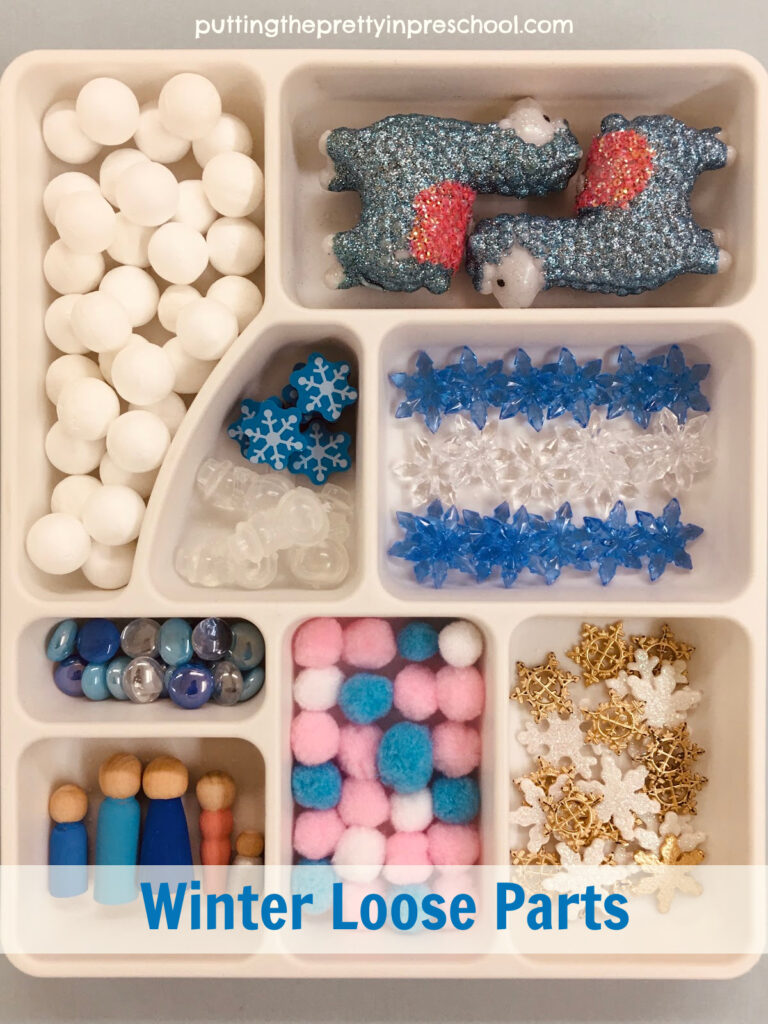
_______
This winter-themed bin has the following supplies:
- unbreakable llama ornaments
- small white styrofoam balls
- blue and clear snowflake gems
- white and gold snowflakes
- blue and clear round gems
- snowflake erasers
- snowman ice cubes
- light pink and blue pompoms
- white pompoms
- wooden people figurines
_______
The Llama-Inspired Winter Sensory Bin

_______
White glutinous rice is the base for this bin. It is the “snow” in the sensory invitation.
Small styrofoam balls make great “snowballs.”
The blue and white snowflakes are dollar store finds, and the white and gold ones are cut from garlands.
Snowflake erasers and snowmen reusable ice cubes add interest to the bin.
The wooden people are painted in pink, silver, and shades of blue to match the winter theme.
The child-friendly llama ornaments fit in perfectly with their baby blue, white, and soft pink coloring.
White, pink, and blue pompoms represent the decorations llamas are often depicted with. They color-coordinate with the wooly animals.
_______
Variations Of This Llama-Inspired Winter Sensory Bin
Below, a curvy wooden block and snack cups and spoons add more play possibilities to the bin.
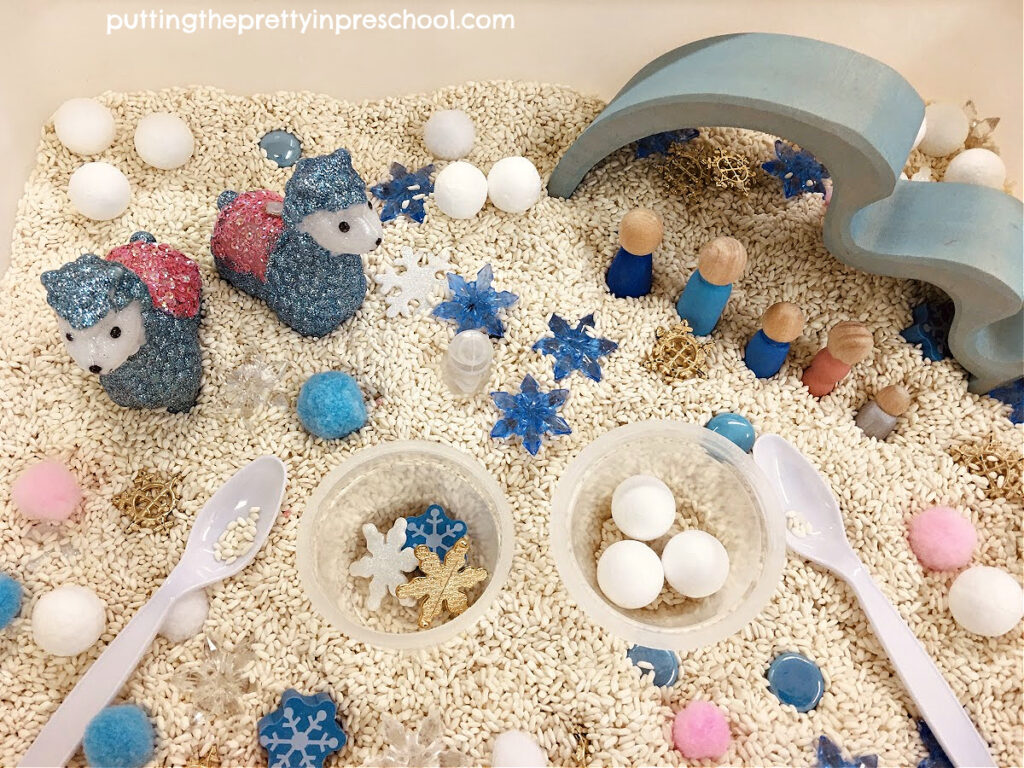
_______
In this next bin, scarf-adorned alligator ornaments are the stars, and pink pompoms are exchanged for red ones.

_______
Ten Fast Llama Facts
Interested in learning a little more about llamas? Here are ten fast facts about them.
Llamas are close relatives to camels but have no hump.
These hardy, sure-footed animals are native to the Andes mountains, comfortable in high altitudes with air low in oxygen.
Long necks and legs, large banana-shaped ears, smallish heads and short tails characterize them. They can grow up to six feet tall.
Grasses, plants, and small shrubs are foods llamas forage on.
Llamas can run fast, which helps them get away from predators such as coyotes, mountain lions, and ocelots.
Llamas have one baby, called a cria.
Able to carry loads ¼ of their weight, llamas make great pack animals. They are useful for wilderness trekking.
Protective of other animals, a lone male llama is sometimes used as a guard for smaller livestock.
Llamas are a source of food and wool.
There are no more of these affectionate, intelligent creatures living in the wild.
_______
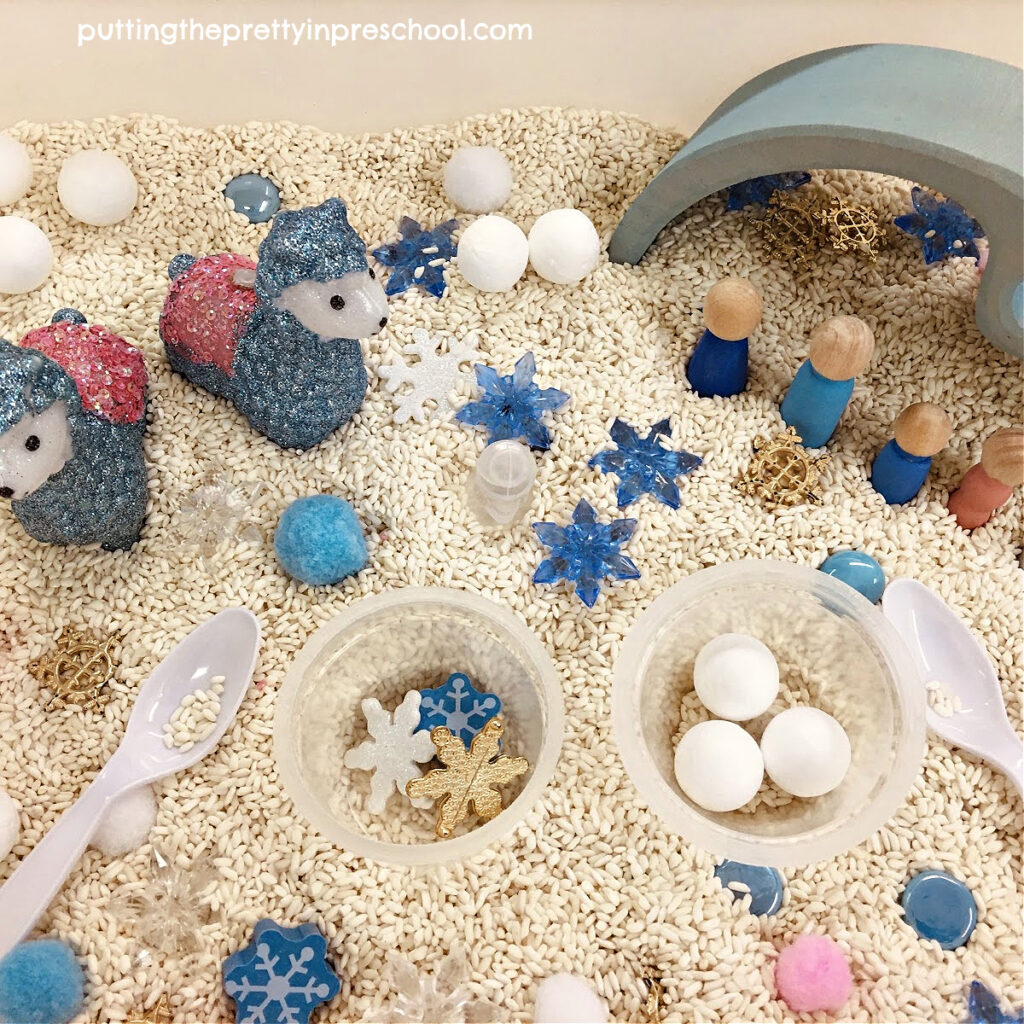
_______
Unbreakable, child-friendly Christmas ornaments transition well from being festive holiday decorations to becoming loose parts for themed play throughout the year. Next, the llamas in this post will be incorporated into a Valentine’s Day sensory bin.
_______
Related:
Kid’s Winter Wonderland Tablescape
Painting Ice And Snow Activity
Winter Wreath Paper Plate Craft
_______
[Read more…] about Llama-Inspired Winter Sensory Bin